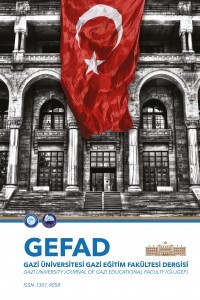Tevhidi Tedrisat ve Laik Eğitim
Osmanlı İmparatorluğu\'nda eğitim ve öğretim, sadece bir hayır işi, bir dini görev kabul edilmiş ve vakıflar yoluyla yürütülmüştür. Geleneksel eğitim kurumları arasında, sadece “askeri eğitim” ve “yöneticilerin eğitimi” devlet tarafından yürütülmüştür. 18. yüzyılda Avrupa\'da ortaya çıkan endüstriyel gelişme karşısında Osmanlı Medeniyeti, eski üstünlüğünü yitirip zayıflamaya başlamış ve eğitim-öğretim de dahil olmak üzere birçok alanda yenileşmelere girişmek zorunda kalmıştır. Eğitim ve öğretim alanında ilk yenileşmeler, mevcut okullara dokunmadan, Batı örneğinde askeri okulların açılmasıdır. Eğitim alanında bu ikilik, Batı örneğinde sivil okulların kurulmasına ağırlık verilmesiyle daha da belirginleşti. Zamanla, ayrı ayrı Education in the Ottoman Empire was accepted as a charity and religious duty and was run by the communal foundations. Traditionally the state was only interested educating the military and administrative staff and therefore opened and operated schools to serve to that purpose. The Ottoman civilization began to loose its superiority and weakened due to the industrial revolution that took place in Europe in the 18th century. This enforced the rulers to reform the educational system. Those reforms, however, did not bring about any changes in the existing schools but new military schools that imitated those in Europe were opened. This duality became more apparent by the emergence of civil schools which were modeled similar schools in Europe. Due to the diverse opinions of the generations that were grown in these two essentially different school systems forming a definite direction for the sTevhidi Tedrisat, Laik EğitimThe Law of Unification of Education, Secular Education Tam Metin
The Law of Unification of Education and Secular Education
Education in the Ottoman Empire was accepted as a charity and religious duty and was run by the communal foundations. Traditionally the state was only interested educating the military and administrative staff and therefore opened and operated schools to serve to that purpose. The Ottoman civilization began to loose its superiority and weakened due to the industrial revolution that took place in Europe in the 18th century. This enforced the rulers to reform the educational system. Those reforms, however, did not bring about any changes in the existing schools but new military schools that imitated those in Europe were opened. This duality became more apparent by the emergence of civil schools which were modeled similar schools in Europe. Due to the diverse opinions of the generations that were grown in these two essentially different school systems forming a definite direction for the sTevhidi Tedrisat, Laik EğitimThe Law of Unification of Education, Secular Education Tam Metin
